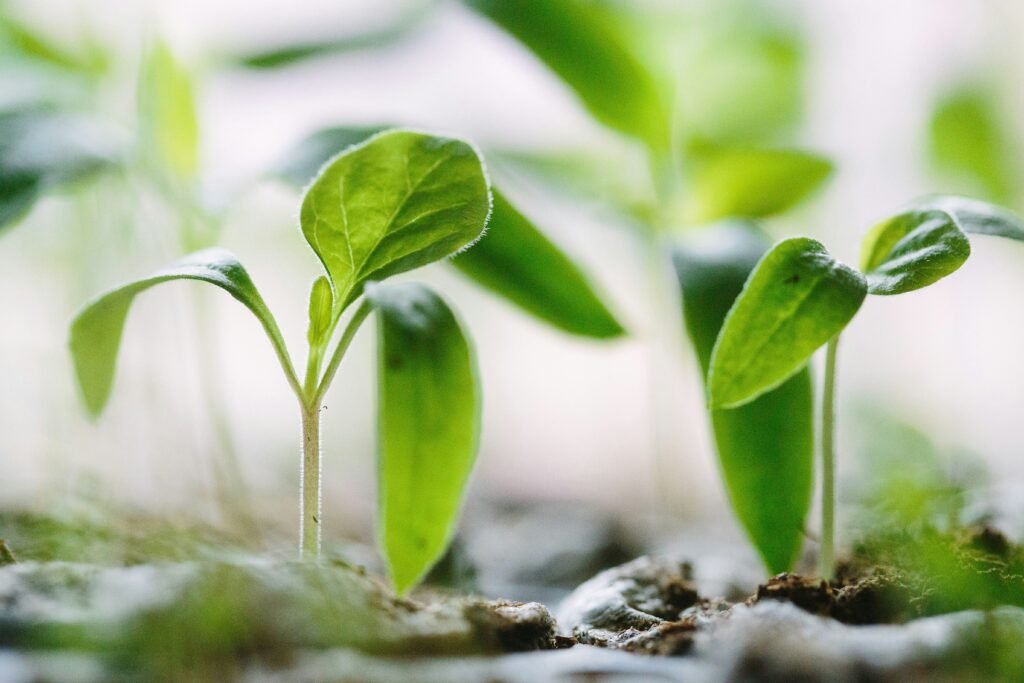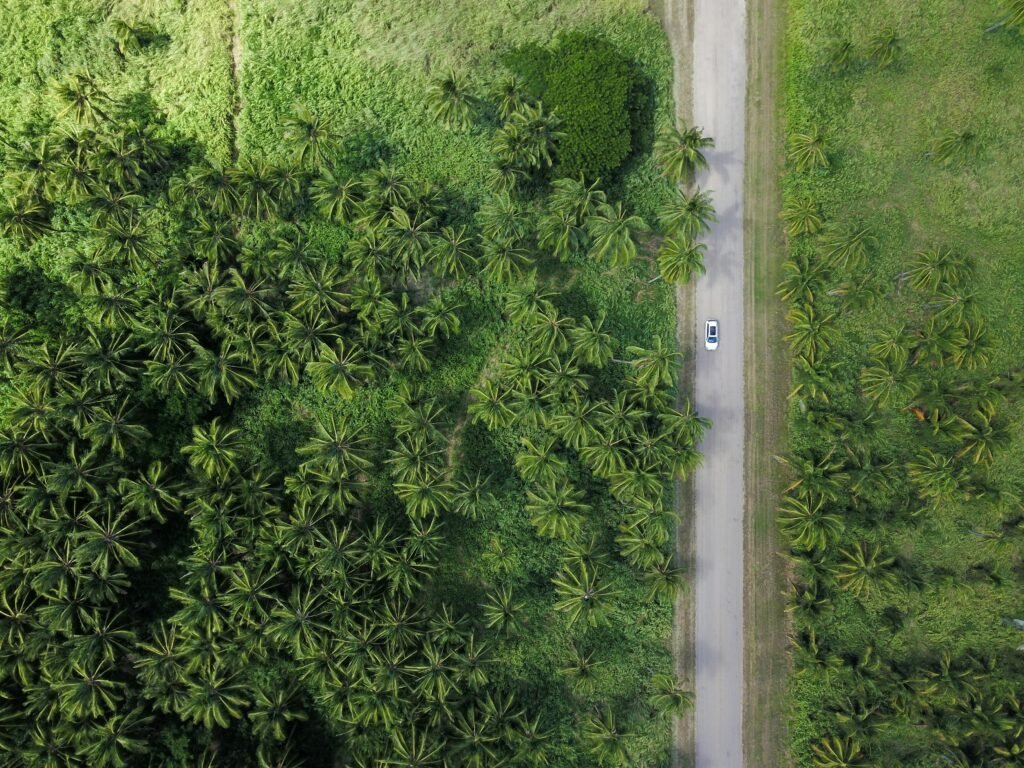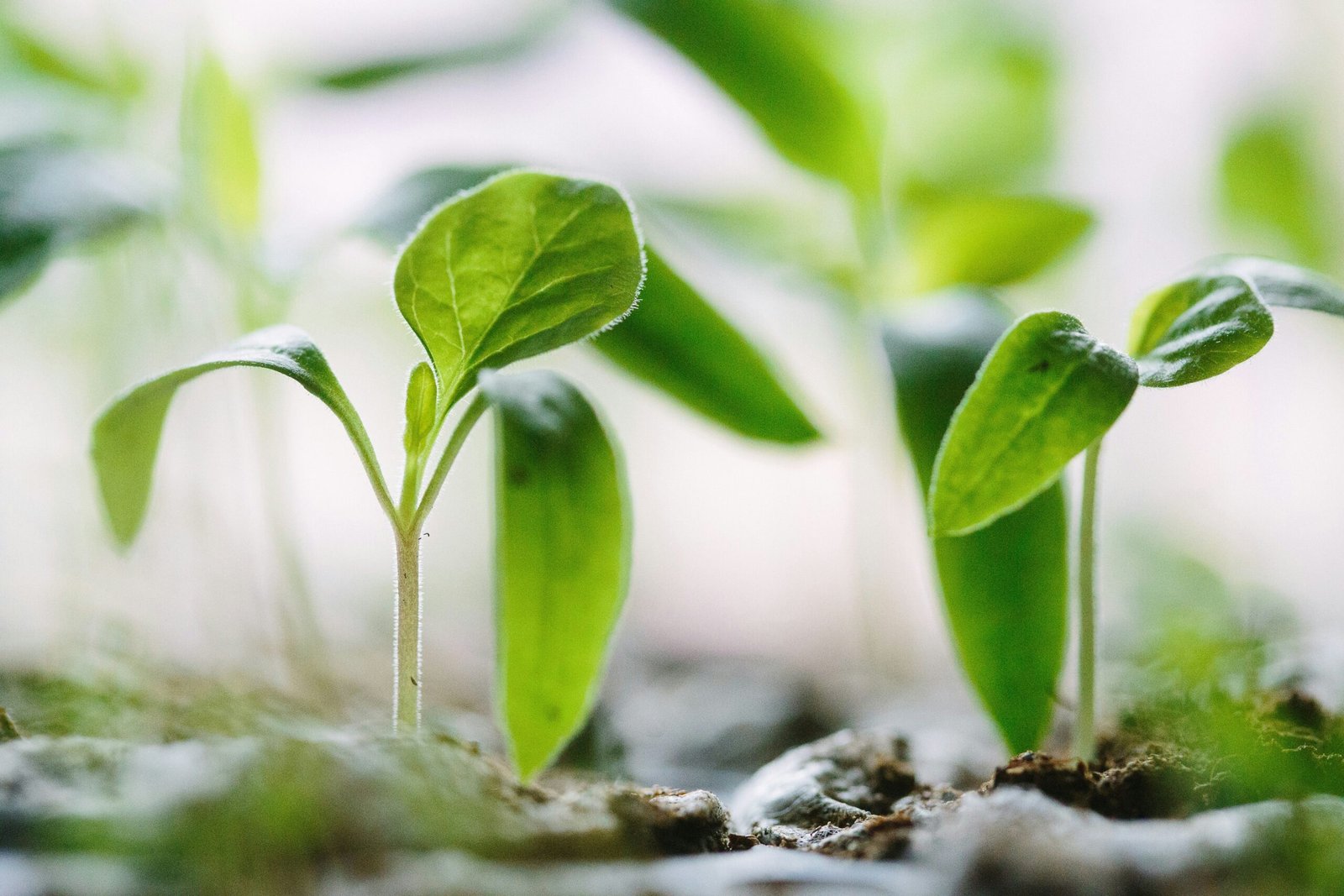Have you noticed the growing popularity of eco-friendly plastic boxes? These innovative containers are taking the market by storm, offering a sustainable and environmentally conscious alternative to traditional packaging. With a focus on reducing waste and promoting a greener future, the trend of eco-friendly plastic boxes is steadily gaining momentum. From food storage to personal care products, businesses and individuals alike are embracing these sustainable options, making a positive impact on the planet without compromising on convenience and functionality. Join the movement and discover the benefits of eco-friendly plastic boxes for yourself.

This image is property of images.unsplash.com.
Why Eco-Friendly Plastic Boxes?
Plastic boxes have become an integral part of our daily lives, from food packaging to retail and shipping materials. However, the environmental impact of traditional plastic boxes cannot be ignored. With the growing concern for the planet’s well-being, there has been a growing trend towards eco-friendly plastic boxes. These boxes are designed to minimize the harm caused by plastic waste and are a promising step towards a more sustainable future.
Benefits of Eco-Friendly Plastic Boxes
The use of eco-friendly plastic boxes offers several benefits over their conventional counterparts. Firstly, these boxes are made from materials that have a reduced impact on the environment. They are produced using fewer resources and generate fewer greenhouse gas emissions during manufacturing. Secondly, eco-friendly plastic boxes are designed to be recyclable, biodegradable, or compostable, providing end-of-life options that minimize waste and pollution. Lastly, using eco-friendly plastic boxes can help businesses and consumers reduce their carbon footprint and contribute to a greener, more sustainable economy.
Growing Consumer Demand
The demand for eco-friendly plastic boxes is on the rise, driven by an increasing awareness of environmental issues and a desire for sustainable products. Consumers are becoming more conscious of the impact their purchasing decisions have on the planet, and they are actively seeking out products and packaging that align with their values. As a result, businesses across various industries are responding to this demand and incorporating eco-friendly plastic boxes into their product offerings. This growing consumer demand not only promotes sustainability but also presents a significant market opportunity for businesses to capitalize on this trend.
Types of Eco-Friendly Plastic Boxes
Eco-friendly plastic boxes can be categorized into three main types: biodegradable, compostable, and recyclable plastic boxes. Each type has unique characteristics and benefits that contribute to their overall sustainability.
Biodegradable Plastic Boxes
Biodegradable plastic boxes are designed to break down naturally over time, through the action of microorganisms, into harmless substances like water, carbon dioxide, and biomass. These boxes are typically made from plant-based materials such as cornstarch, sugarcane, or cellulose. Biodegradable plastic boxes provide an alternative to traditional plastics that can persist in the environment for hundreds of years. By choosing biodegradable options, you can significantly reduce the amount of plastic waste that ends up in landfills or pollutes natural ecosystems.
Compostable Plastic Boxes
Compostable plastic boxes are similar to biodegradable boxes but with an added requirement – they must break down in a composting environment and turn into nutrient-rich compost. These boxes are typically made from organic materials like cornstarch, PLA (polylactic acid), or bagasse (sugarcane waste). Compostable plastic boxes offer a sustainable solution to packaging waste as they can be composted alongside other organic materials, eliminating the need for separate waste streams. When composted correctly, these boxes can enrich the soil and support agricultural practices, making them an excellent choice for eco-conscious consumers and businesses.
Recyclable Plastic Boxes
Recyclable plastic boxes are designed to be collected, processed, and transformed into new products through recycling processes. These boxes are typically made from commonly recyclable plastics such as polyethylene (PE), polypropylene (PP), or polyethylene terephthalate (PET). Recycling plastic boxes helps to conserve resources, reduce energy consumption, and decrease the demand for virgin materials. However, it is essential to consider the infrastructure and availability of recycling facilities to ensure that the boxes can be properly recycled in your area.

This image is property of images.unsplash.com.
Biodegradable Plastic Boxes
Definition and Characteristics
Biodegradable plastic boxes are specifically designed to break down naturally over time when exposed to microorganisms in the environment. The term “biodegradable” does not have a strict definition, and the timeframe for degradation can vary depending on various factors such as temperature, moisture, and microbial activity. These boxes are typically made from renewable resources such as plant-based materials or bio-based polymers. Biodegradable plastic boxes offer a more sustainable alternative to traditional plastics, as they have the potential to reduce the accumulation of plastic waste in landfills and ecosystems.
Advantages and Disadvantages
One of the significant advantages of biodegradable plastic boxes is their reduced environmental impact compared to conventional plastic boxes. They break down into harmless substances, reducing the long-term harm caused by plastic waste. Additionally, the production of biodegradable plastic boxes generally requires fewer fossil fuels and emits fewer greenhouse gases, contributing to lower carbon footprints. However, it is important to note that biodegradable plastics may not break down as quickly or completely in all environments, and proper disposal methods are crucial to ensure effective degradation.
Applications and Use Cases
Biodegradable plastic boxes find applications across various industries, primarily where single-use plastic packaging is prevalent. In the food industry, biodegradable plastic boxes are used for takeaway containers, cutlery, and food storage. These boxes offer a convenient and sustainable alternative to traditional plastic packaging. In the retail sector, biodegradable plastic boxes are used for product packaging, display containers, and shopping bags, catering to environmentally conscious consumers. Moreover, biodegradable plastic boxes are gaining popularity in the shipping and transportation industry as a sustainable alternative to traditional packaging materials, reducing the ecological footprint of the logistics sector.
Compostable Plastic Boxes
What Makes a Plastic Box Compostable?
Compostable plastic boxes are designed to break down in a composting environment, producing nutrient-rich compost that can be used to enrich soil. To be considered compostable, plastic boxes must meet strict standards, such as the ASTM D6400 or EN 13432 certifications. These standards evaluate the product’s ability to biodegrade in a specific timeframe and ensure that the resulting compost does not have any negative impacts. Compostable plastic boxes are typically made from plant-based materials like cornstarch, which can be broken down by microorganisms during the composting process.
Benefits of Compostable Plastic Boxes
Compostable plastic boxes offer several benefits over conventional plastic boxes. Firstly, they help divert organic waste from landfills, where it would release harmful greenhouse gases during decomposition. Instead, compostable plastic boxes can be turned into nutrient-rich compost that enhances soil fertility, contributing to sustainable agricultural practices. Additionally, compostable plastic boxes can be composted alongside other organic waste, simplifying waste management processes. Since compostable plastic boxes are made from renewable resources, their production requires fewer fossil fuels, reducing carbon emissions and reliance on finite resources.
Challenges and Limitations
While compostable plastic boxes offer numerous advantages, there are some challenges and limitations that need to be addressed. One significant challenge is the lack of robust composting infrastructure in many regions. Composting facilities that accept compostable packaging may be limited, making it difficult or impossible for consumers and businesses to properly dispose of these boxes. Additionally, contamination of compostable plastic boxes with non-compostable materials can disrupt the composting process and result in suboptimal degradation. Lastly, the cost of compostable plastic boxes is typically higher than conventional plastic boxes, which may deter some businesses and consumers from adopting them.

This image is property of images.unsplash.com.
Recyclable Plastic Boxes
Understanding Recyclable Plastics
Recyclable plastic boxes are designed to be collected, processed, and transformed into new products through recycling processes. Generally, recyclable plastics are assigned resin identification codes (RICs) based on their polymer type, such as PET (1), HDPE (2), or PP (5). These codes help consumers and recyclers identify and sort different types of plastic for appropriate recycling. Recyclable plastic boxes are typically made from commonly recycled plastics like PET, HDPE, or PP, ensuring compatibility with existing recycling systems and processes.
Benefits and Challenges of Recycling Plastic Boxes
Recycling plastic boxes offers several benefits, both from an environmental and economic standpoint. Firstly, recycling plastic boxes helps to conserve valuable resources by reducing the demand for virgin materials. Recycling also saves energy and reduces greenhouse gas emissions by reducing the need for energy-intensive extraction and manufacturing processes associated with virgin materials. Additionally, recycling plastic boxes diverts waste from landfills, reducing pollution and preserving landfill space. However, plastic recycling faces challenges such as contamination, limited recycling infrastructure, and the complexity of sorting and processing different types of plastics, which can impact the efficiency and effectiveness of recycling efforts.
Recycling Technologies and Infrastructure
The recycling of plastic boxes is made possible through various technologies and infrastructure. Mechanical recycling is the most commonly employed method, where plastics are shredded, melted, and reformed into new products. This method is suitable for plastic boxes made from a single polymer type, as it requires less processing and produces high-quality recycled materials. However, the recycling of multi-layered or complex plastics poses challenges due to the different properties of the layers. Advanced recycling technologies like chemical recycling and pyrolysis offer solutions for these difficult-to-recycle plastics by breaking them down into their constituent monomers or converting them into fuels. Building and expanding recycling infrastructure, including collection systems and processing facilities, is crucial to enable the recycling of plastic boxes on a larger scale and maximize their environmental benefits.
Innovations in Eco-Friendly Plastic Boxes
As the demand for eco-friendly plastic boxes continues to grow, innovative solutions are emerging to further improve their sustainability and functionality.
Plant-Based Plastics
One such innovation is the development of plant-based plastics, also known as bioplastics. These plastics are derived from renewable sources such as corn, sugarcane, or cellulose. Plant-based plastics offer similar characteristics and functionality to traditional plastics but with the added benefit of being biodegradable or compostable. By utilizing plant-based plastics in the production of plastic boxes, businesses can reduce their reliance on fossil fuels and contribute to a more sustainable future.
Mushroom-Based Packaging
Mushroom-based packaging, also known as mycelium packaging, is another exciting innovation in the realm of eco-friendly plastic boxes. This type of packaging is made from agricultural waste combined with mycelium, the root-like structure of mushrooms. The mycelium grows around the waste material, binding it together and forming a rigid structure. Mushroom-based packaging is not only biodegradable but also versatile and durable, making it an excellent eco-friendly alternative for packaging fragile or delicate items.
Edible Plastic Boxes
Edible plastic boxes are a unique and innovative solution that takes sustainability to a whole new level. These boxes are made from edible materials like seaweed or starch, making them safe for consumption. Edible plastic boxes offer several advantages, such as eliminating packaging waste entirely and providing a convenient and eco-friendly alternative to single-use packaging. While still in the early stages of development, edible plastic boxes have the potential to revolutionize the way we package and consume food.
Practical Applications of Eco-Friendly Plastic Boxes
Eco-friendly plastic boxes have practical applications across various industries, offering sustainable packaging solutions for different needs.
Food Packaging
In the food industry, eco-friendly plastic boxes play a crucial role in reducing the environmental impact of packaging. These boxes are used for takeaway containers, meal prep packaging, and product packaging. Eco-friendly plastic boxes provide a safe and functional packaging solution that minimizes waste and reduces the reliance on conventional plastics. Additionally, they can help enhance the shelf life of perishable food items, reducing food waste and improving sustainability throughout the supply chain.
Retail Packaging
Eco-friendly plastic boxes are also finding widespread adoption in the retail sector. Whether it’s for clothing, electronics, or cosmetics, these boxes offer a sustainable alternative to traditional packaging materials. Retail businesses can differentiate themselves by using eco-friendly plastic boxes, attracting environmentally conscious consumers and aligning their brand with sustainability values. Eco-friendly retail packaging not only reduces waste but also enhances the overall customer experience and perception of the brand.
Shipping and Transportation
The logistics industry heavily relies on packaging materials to safely transport goods. Eco-friendly plastic boxes are gaining traction in this sector as an environmentally responsible alternative to traditional packaging materials. By using eco-friendly plastic boxes, businesses can reduce their carbon footprint throughout the supply chain and minimize the impact on the environment. These boxes offer durability and protection during transportation while ensuring a more sustainable approach to packaging.
Economics and Market Trends
The market for eco-friendly plastic boxes is experiencing significant growth as consumers and businesses increasingly prioritize sustainability.
Growing Market Size and Revenue Projections
The demand for eco-friendly packaging solutions, including plastic boxes, is rapidly expanding. According to market research reports, the global eco-friendly packaging market is projected to reach a value of over $300 billion by 2025, with a compound annual growth rate (CAGR) of around 5%. This growth is fueled by factors such as increasing consumer awareness and demand for sustainable products, stricter regulatory frameworks, and the rise of eco-friendly packaging brands. As businesses recognize the market potential, investments in research and development, as well as production capabilities, are likely to increase, further propelling the market’s growth.
The Role of Regulations and Policies
Regulations and policies play a crucial role in shaping the market for eco-friendly plastic boxes. Governments and regulatory bodies worldwide are imposing stricter regulations and standards on plastic packaging materials to curb plastic waste and promote sustainability. These regulations include requirements for recycled content, bans on certain single-use plastics, and incentives for the use of eco-friendly alternatives. Compliance with these regulations is not only essential for businesses to operate legally but also presents an opportunity to gain a competitive advantage by offering sustainable products that meet consumer expectations.
Rise of Eco-Friendly Packaging Brands
The rise of eco-friendly packaging brands has significantly contributed to the growth of the market for eco-friendly plastic boxes. These brands prioritize sustainability and place a strong emphasis on using eco-friendly materials, including plastic boxes, to package their products. Eco-friendly packaging brands cater to environmentally conscious consumers who actively seek out products with minimal environmental impact. The success of these brands demonstrates that sustainability is not just a trend but a fundamental value that influences consumer purchasing decisions.
Environmental Impact and Sustainability
The environmental impact of plastic packaging, and subsequently, the need for eco-friendly plastic boxes, cannot be overstated. Eco-friendly plastic boxes offer several ways to address plastic waste and pollution.
Reducing Plastic Waste and Pollution
Conventional plastic packaging contributes significantly to plastic waste and pollution, with millions of tons of plastic ending up in landfills, oceans, and ecosystems every year. Eco-friendly plastic boxes provide a solution to minimize plastic waste by utilizing materials that biodegrade, compost, or can be recycled efficiently. By choosing eco-friendly alternatives, businesses and consumers can reduce the reliance on single-use plastics, mitigate pollution, and contribute to a cleaner and healthier planet.
Lifecycle Analysis and Carbon Footprint
Eco-friendly plastic boxes are designed to minimize the carbon footprint associated with their production and disposal. Lifecycle analysis is an essential tool to assess the environmental impact of these boxes throughout their entire lifecycle, from raw material sourcing to end-of-life options. By analyzing factors such as energy consumption, greenhouse gas emissions, and resource usage, it becomes possible to identify areas for improvement and make informed decisions that further enhance the sustainability of eco-friendly plastic boxes.
End-of-Life Options
One of the key benefits of eco-friendly plastic boxes is the availability of environmentally responsible end-of-life options. Biodegradable plastic boxes can break down into harmless substances in the environment, reducing the accumulation of plastic waste in landfills. Compostable plastic boxes can be composted alongside other organic waste, further enhancing the sustainability of waste management practices. Recyclable plastic boxes can be collected and processed into new products, reducing the consumption of virgin materials and conserving valuable resources. These end-of-life options facilitate a circular economy approach to plastic packaging, minimizing waste and maximizing resource efficiency.
Consumer Education and Awareness
Consumer education and awareness play a vital role in driving the adoption of eco-friendly plastic boxes and encouraging sustainable behaviors.
Educating Consumers about the Benefits of Eco-Friendly Plastic Boxes
Many consumers are still unaware of the benefits of eco-friendly plastic boxes and the environmental impact of conventional plastic packaging. Educating consumers about the advantages of these boxes, such as reduced waste, lower carbon footprint, and support for a more sustainable economy, can foster a sense of environmental responsibility and encourage conscious purchasing decisions. Transparent labeling and clear communication on the packaging can help consumers identify eco-friendly plastic boxes and make informed choices.
Importance of Proper Waste Disposal and Recycling
Proper waste disposal and recycling are critical aspects of sustainable plastic packaging. Consumers need to understand the importance of disposing of eco-friendly plastic boxes in the appropriate waste streams, whether it be composting or recycling. Providing accessible and easily understandable information on disposal and recycling practices can empower consumers to actively participate in sustainable waste management. Collaboration between governments, businesses, and educational institutions can also play a vital role in promoting proper waste disposal and recycling.
Promoting Sustainable Lifestyles
Beyond the use of eco-friendly plastic boxes, promoting sustainable lifestyles is essential for long-term environmental sustainability. By encouraging practices such as reducing plastic consumption, reusing packaging materials, and choosing eco-friendly alternatives, individuals can contribute to a circular economy and minimize their environmental footprint. Consumer awareness campaigns, community initiatives, and incentives for sustainable behaviors can all help foster a culture of sustainability and promote the adoption of eco-friendly plastic boxes as part of a broader sustainable lifestyle.
In conclusion, the growing trend of eco-friendly plastic boxes reflects the increasing awareness and demand for sustainable packaging solutions. Biodegradable, compostable, and recyclable plastic boxes offer a range of options to minimize the environmental impact of plastic packaging. Innovations in materials and technologies further enhance the sustainability of these boxes, while practical applications across various industries demonstrate their versatility. The economics and market trends show a promising future for eco-friendly plastic boxes, driven by growing consumer demand and supportive regulations. Embracing eco-friendly plastic boxes is a significant step towards reducing plastic waste and pollution, achieving a more sustainable economy, and preserving the environment for future generations.
